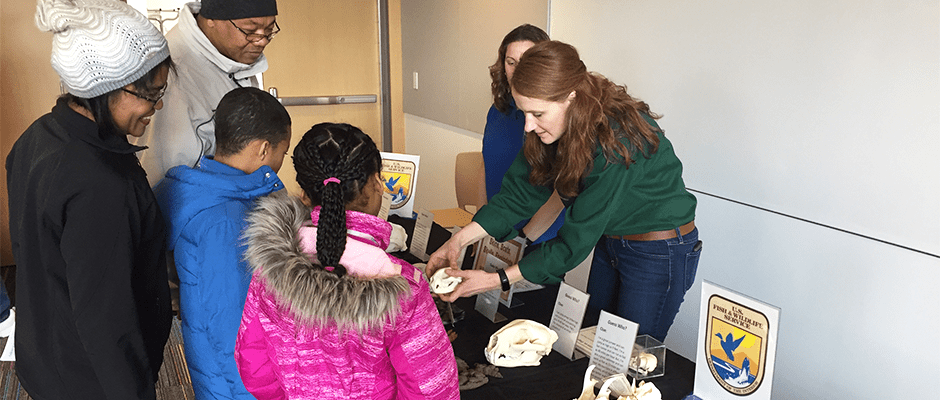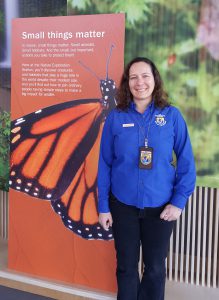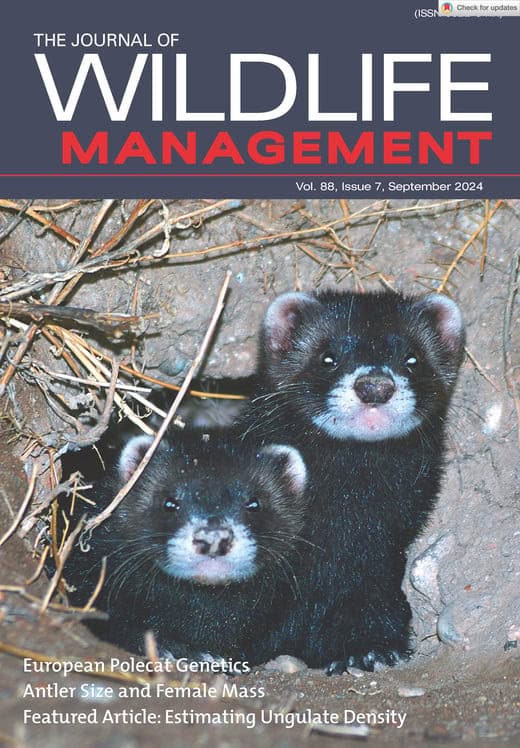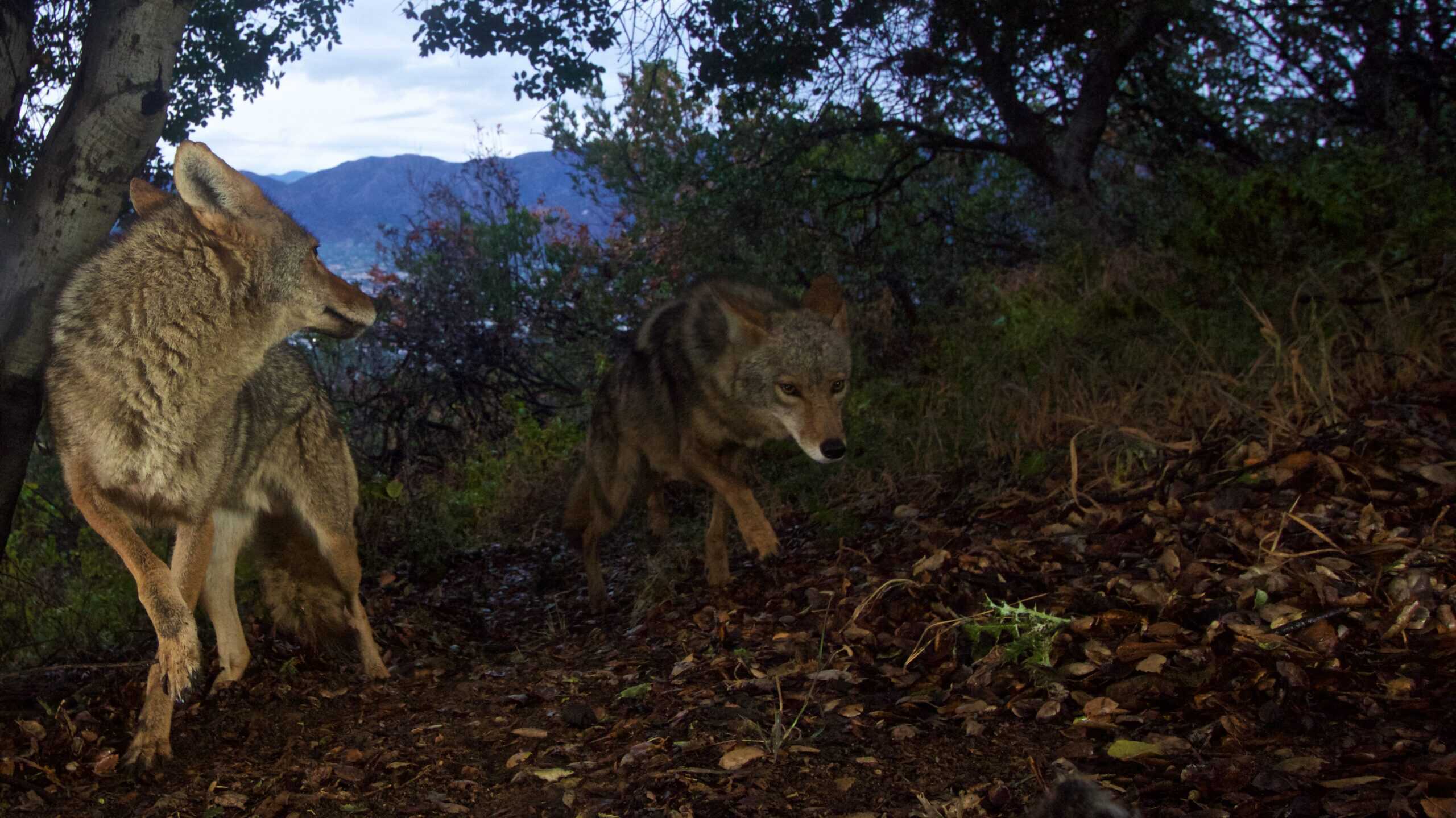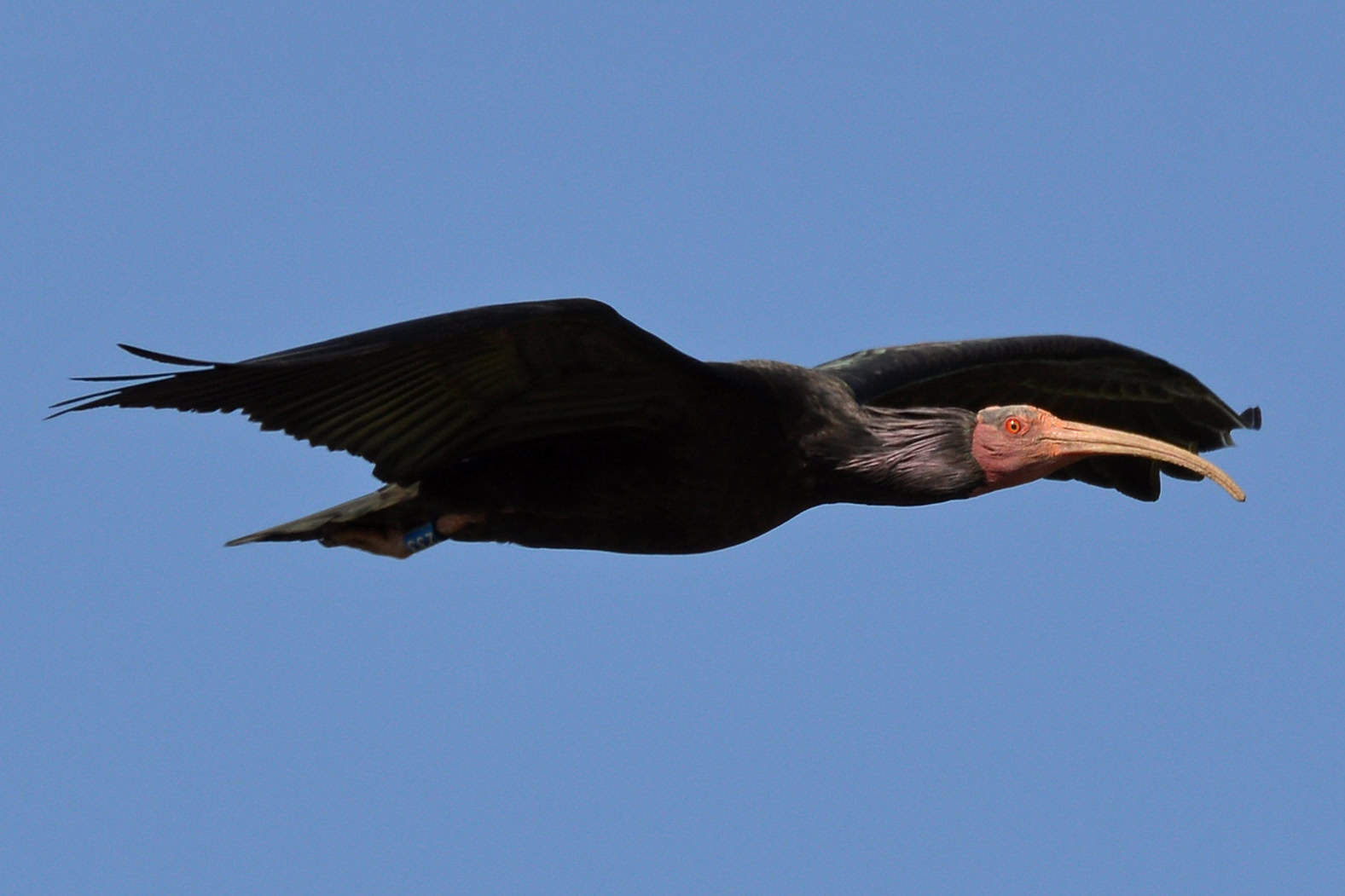Share this article
Unique partnership between USFWS and Oregon Zoo
The Service has officially “broken new ground” on an exciting way to effectively connect with the public and tell the USFWS story by partnering with the Oregon Zoo in the development of the zoo’s new Education Center. The sustainably built, aesthetically pleasing center was designed to foster a conservation ethic among the zoo’s 1.6 million annual visitors. With a Service staffer on-site, the facility provides an opportunity to take the partnership a significant step further.
Opportunity Knocks
It all started in 2013 during a groundbreaking ceremony for a new exhibit at the Oregon Zoo called Condors of the Columbia, one of several projects on which the Service has partnered with the zoo over the years. Paul Henson, the Service’s Oregon State supervisor, was inspired by a conversation with Grant Spickelmier, the zoo’s education curator, who described a voter-approved bond measure to build a new state-of-the-art education facility. Henson saw a phenomenal opportunity to spread the conservation message to a broader, more diverse urban audience, and suggested to Spickelmier the idea of having a Service employee stationed at the Education Center. This small spark of an idea led to a unique partnership, the first of its kind for the Service.
“Joining the Oregon Zoo in their new Education Center is a natural extension of our shared conservation mission and an innovative way for the Service to connect with a broader audience,” says Henson. “We have a long history of working together to recover species, and now we look forward to continuing our collective efforts on an education mission to tell the wildlife conservation story and to build a strong conservation ethic in present and future generations.”
Spickelmier adds, “The Oregon Zoo is thrilled to have the U.S. Fish and Wildlife Service partner with us at the zoo’s new Education Center. Having USFWS scientists and educators work directly with the zoo’s 1.6 million guests greatly increases our ability to raise awareness about wildlife conservation and inspire conservation action.”
A New Way of Reaching Out
The high visibility of the Oregon Zoo provides an ideal venue to tell the story of fish and wildlife conservation to visitors from a variety of economic, racial and cultural backgrounds.
“Small Things Matter” is the primary theme of the Education Center, which includes small creatures, small habitats and small actions. The center helps visitors learn that nature is closer than they think, even in urban areas. Visitors walk away with direct application for how they, too, can protect wildlife. Key features of the center include a Nature Exploration Station with hands-on activities, interpretive displays and daily presentations from subject specialists, a wildlife garden with information about pollinators, native plants and ways the public can transform their yard into a place for wildlife, a western pond turtle recovery lab, a 150-seat hall, and three classrooms, including a science lab.
The Service’s decision to station a full-time interpretive specialist at the zoo, working hand-in-hand with zoo staff in the development of activities, displays and programs designed to communicate our shared conservation messages is a first for our agency. Leah Schrodt was selected for this role, and serves as a liaison to a broad range of Service experts. She works to draw out and share their wealth of conservation knowledge in areas such as endangered species, fisheries, pollinators, wildlife refuges, invasive species, law enforcement, wildlife forensics and much more.
And it won’t be just Oregon staff. Service experts from across the nation will have an opportunity to come to the center and talk about the important work of the Service and our conservation mission.
“The Oregon Zoo Education Center is an ideal venue for instilling a stewardship ethic in the public we serve,” says Schrodt. “The true spirit of collaboration, and what can be accomplished when we work together in partnership to achieve our conservation goals, is beautifully modeled in this endeavor.”
A History of Partnership
The Service has developed partnerships with a number of zoos and aquariums across the nation. These relationships are critical to our recovery work as we rely on zoo expertise in species propagation and animal husbandry for reintroductions. The Oregon Zoo has assisted our efforts to recover many endangered species:
- The zoo houses one of four California condor breeding facilities, which produces more than 30 birds annually, most of which are released into the wild. Birds that cannot be released make their home in the Condors of the Columbia exhibit, which educates visitors about the bird’s plight.
- The Oregon Zoo and Woodland Park Zoo (in Seattle, Washington) participate in a project to help vulnerable hatchling western pond turtles evade predators. More than 1,800 turtles have been released to suitable sites. Western pond turtles were recently petitioned for Endangered Species Act (ESA) protection.
- In 2002, only 16 pygmy rabbits remained in Washington. Soon after, the Oregon Zoo developed a breeding program and was the first zoo in the world to successfully breed pygmy rabbits. While the zoo’s breeding program concluded in 2012, it continues to actively participate in pygmy rabbit conservation efforts.
- Oregon silverspot butterfly numbers crashed in 1998, prompting the Service to begin efforts to supplement the population in partnership with the Oregon and Woodland Park zoos. The zoos are able to release about 2,000 butterflies each year on the Oregon Coast. The Oregon Zoo also helps rear and release Taylor’s checkerspot butterfly, a threatened species.
- The Oregon Zoo and various partners work collaboratively with the Service to monitor, study and recover populations of Oregon spotted frog, which was recently protected under the ESA.
In 1998, the Service signed an official memorandum of understanding with the Association of Zoos and Aquariums to work together for the conservation of native North American animals, plants and their habitats, and to educate the American public about the biological, economic and aesthetic contributions these species make to our quality of life. This partnership with the Oregon Zoo shows what can be accomplished when the Service works with zoos and aquariums to achieve our conservation missions.
For more information about the Service’s Education Center partnership at the Oregon Zoo please contact Leah Schrodt: leah_schrodt@fws.gov.
The U.S. Fish and Wildlife Service is a Strategic Partner of TWS.
Header Image: Fish and Wildlife Service biologists Shauna Ginger and Jennifer Siani share the "Skins, Scats, Skulls and Footprints" education kit with visitors during the grand opening weekend. ©USFWS



